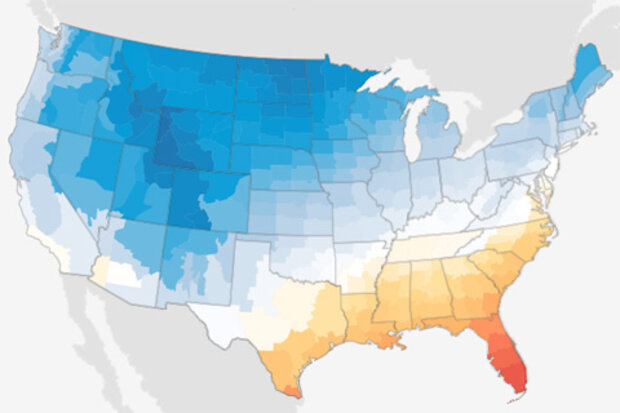Beyond the Data Blog
Most people in the East who remember historical snowstorms consider the March 1993 “Storm of the Century” to be the biggest snowstorm to ever affect that part of the country. It’s no wonder: 270 people were killed in the U.S., damages were in the neighborhood of $5.5 billion, every major airport on the east coast was shut down, and most interstates north of Atlanta were closed.
Using our Regional Snowfall Index (RSI), the March 12-15, 1993, event had a raw score of 22.12, making it a Category 5 storm. Yet when we look at the ranking of all historical Northeast snowstorms, the “Storm of the Century” only finishes in second place. No way! How can that be?
Trying to be objective about…
Read article
It’s early February, and many of us just dug out—literally and figuratively—from the blizzard of January 2016. We got 6-12 inches here in Asheville; the totals varied from mountain to mountain, like they always do. The snowstorm also buried me under 25 feet of snow-related paper, and that’s what inspired this week’s blog.
Putting today’s big weather events into perspective is one of our responsibilities here at NCEI. People and businesses are naturally curious about whether today’s Big Event is dwarfed by history, repeats history, or makes history. This helps us map it out in our minds and in our strategic plans, and that helps shape our actions going forward.
We need&nbs…
Read article
Welcome back—belatedly—from the holidays. For those of us east of the Mississippi, it didn’t feel like the holidays. Well, it did feel like a holiday—Memorial Day, maybe. In fact, for some of us, the weather felt a lot more like Memorial Day than the holidays we celebrate as the year closes.
The year ended with an unprecedented warm run in the United States. The last 5-6 weeks of 2015 were very warm east of the Rockies. But how unusual was it?
Just how warm, nationally?
On a national scale, December was both the warmest and wettest December on record for the contiguous United States, or CONUS. That in itself is a feat. It’s the first time since the CONUS record reached statistic…
Read article
This week, Beyond the Data looks at one of the more well-grounded “rules of thumb” for understanding climate change. This one is pretty simple to put your thumb on: on average, cooler places and cooler times are warming more quickly than warmer places and times.
But first, let’s clarify–and emphasize–what we mean by a “rule of thumb.” Just like in its common usage, a rule of thumb here refers to something generally true often enough to be useful and informative, but not universally reliable–kind of a “two-out-of-three” or “three-out-of-four” kind of situation.
So, it's nothing to thumb your nose at, because it’s true more often than not. But it’s also not the case everywhere. &nb…
Read article
Many factors contribute to the climatology of a given location, including how close to the equator you are, proximity to the ocean, and elevation. But when it comes to what causes climate to vary over seemingly short distances, few things can compare to the influence of topography.
Take my city, for example. I live in Asheville, in western North Carolina, a small city in the heart of the Southern Appalachians. I can drive ten minutes and be in one of the driest locations east of the Mississippi, or drive an hour and be in one of the wettest. That the temperature and precipitation patterns that we experience here can be so different from somewhere just a few miles away is due not just to e…
Read article




